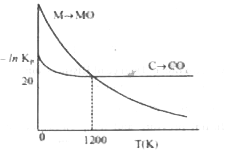Complete Solutions to JEE MAIN 5 YEARS AT A GLANCE of chapter EQUILIBRIUM of Class 12 book with complete answers and questions
| Class 12 | CHEMISTRY |
| Chapter | EQUILIBRIUM |
| DISHA PUBLICATION | JEE MAIN 5 YEARS AT A GLANCE |
| Number Of Questions | 14 |
| Academic Year | 2023-24 |
The gas phase reaction
View SolutionWhich of the following salts is the most basic in aqueous solution?
View SolutionAn aqueous solution contains
View SolutionAn aqueous solution contains an unknown concentration of
View SolutionAddition of sodium hydroxide solution to a weak acid (HA) results in a buffer of pH 6. If ionisation constant of HA is
View Solution50 mL of 0.2M ammonia solution is treated with 25 mL of 0.2 M HCl. If
View Solution
View SolutionThe plot shows the variation of

Identify the correct statement :
View SolutionFor the reaction,
are respectively,
The equilibrium constant for the reaction at 298 K is :
View SolutionThe equilibrium constant at
View SolutionGaseous
At 300 K and 1 atm pressure, the degree of dissociation of
View SolutionThe standard Gibbs energy change at
View SolutionAt certain temperature
View SolutionFor the reaction,
View Solution
JEE MAIN 5 YEARS AT A GLANCE questions and complete solutions for chapter EQUILIBRIUM of DISHA PUBLICATION CHEMISTRY (HINGLISH) of Class 12
All Exercises from DISHA PUBLICATION Class 12 CHEMISTRY EQUILIBRIUM
- Exercise-1: Concept Builder (Topicwise) (TOPIC 1: Law of Mass Action, Equilibrium Constant (Kc and Kp) and its Applications)
- Exercise-1: Concept Builder (Topicwise) (TOPIC 2: Relation between K, Q, G and Factors Effecting Equilibrium)
- Exercise-1: Concept Builder (Topicwise) TOPIC 3: Theories of Acids and Bases, lonic Product of Water and pH Scale )
- Exercise-1: Concept Builder (Topicwise) TOPIC 4: Ionization of Weak Acids and Bases and Relation between Ka and Kb )
- Exercise-1: Concept Builder (Topicwise) TOPIC 5: Common lon Effect, Salt Hydrolysis, Buffer Solutions and Solubility Product)
- Exercise-2 : Concept Applicator
- JEE MAIN 5 YEARS AT A GLANCE